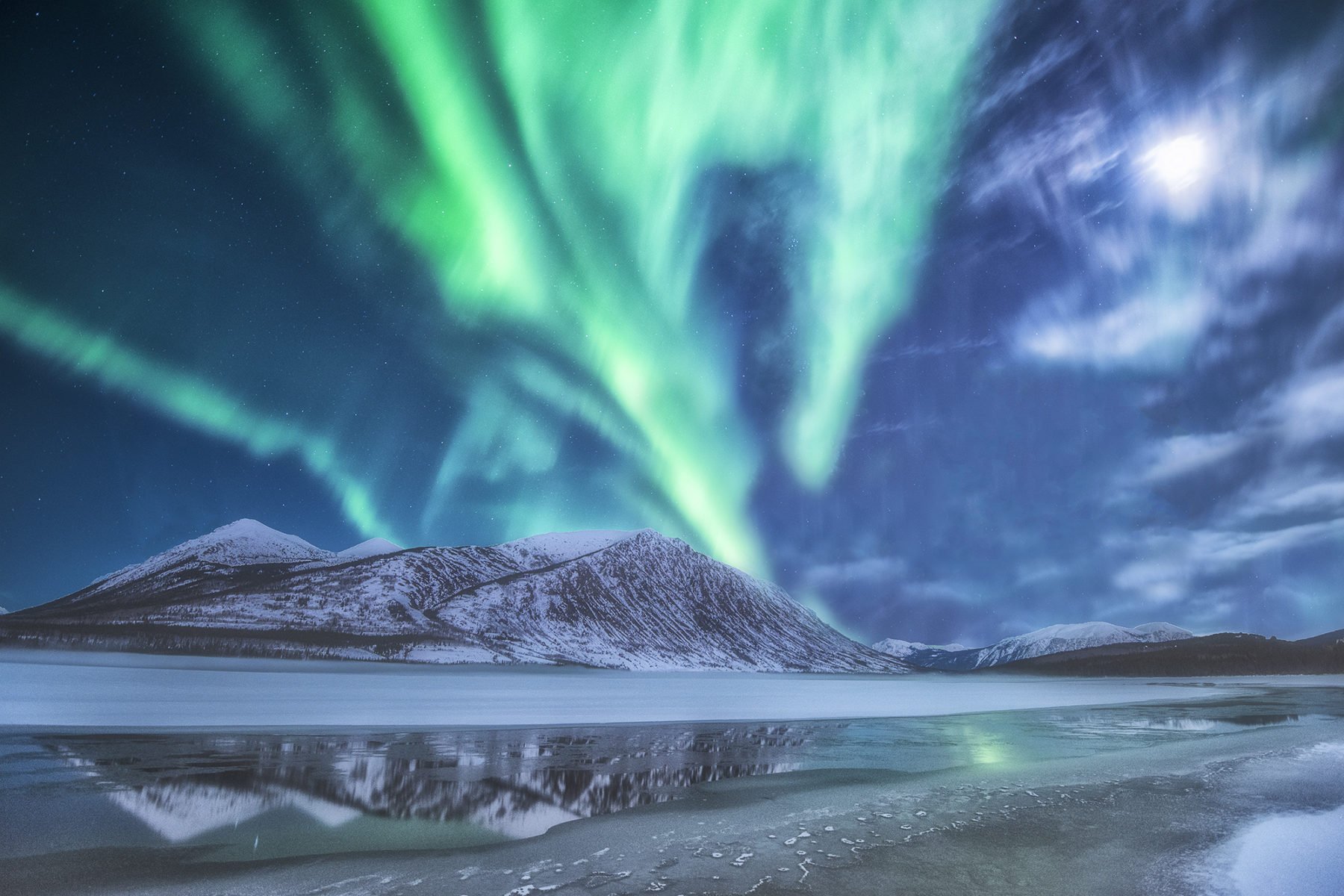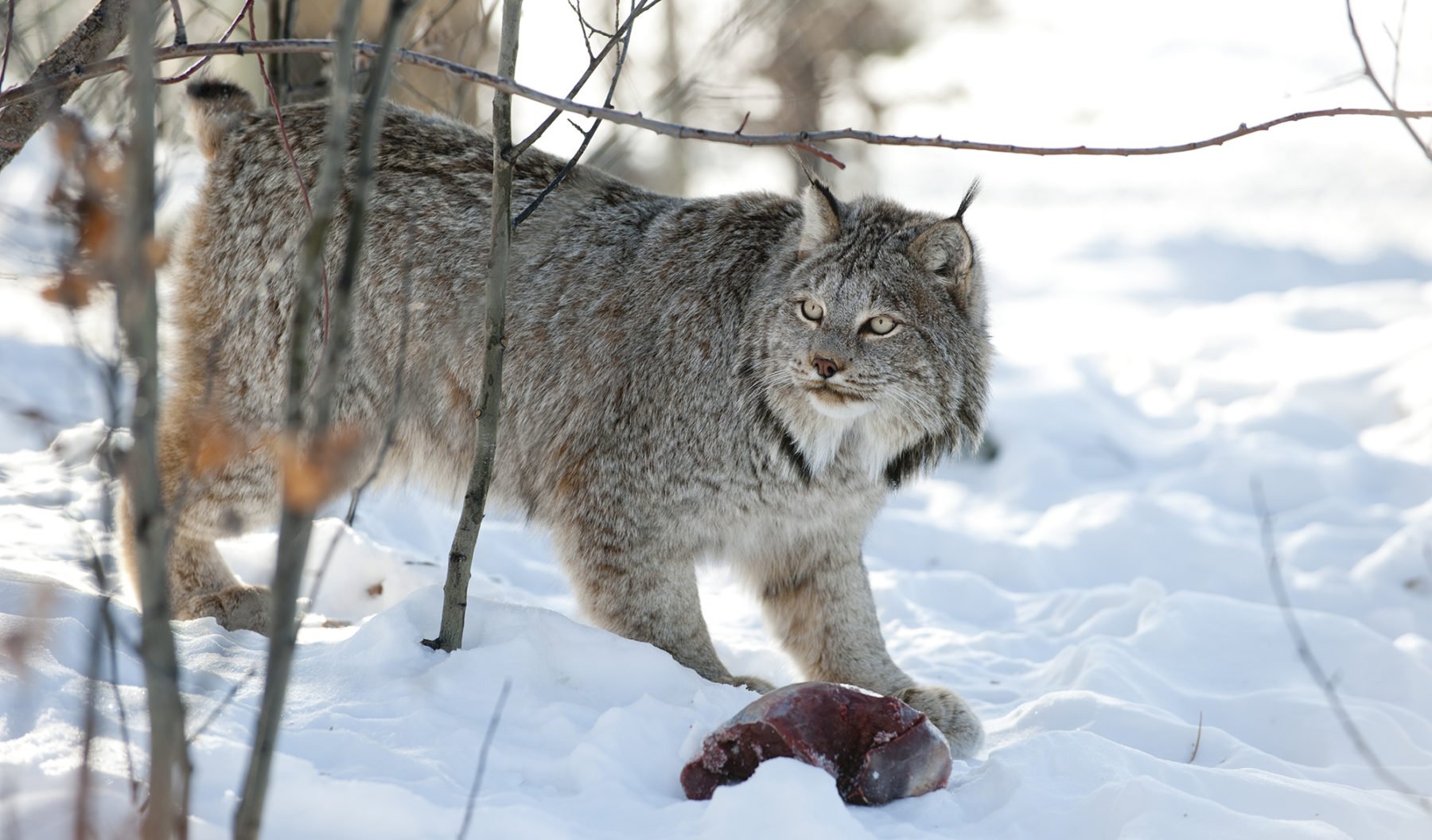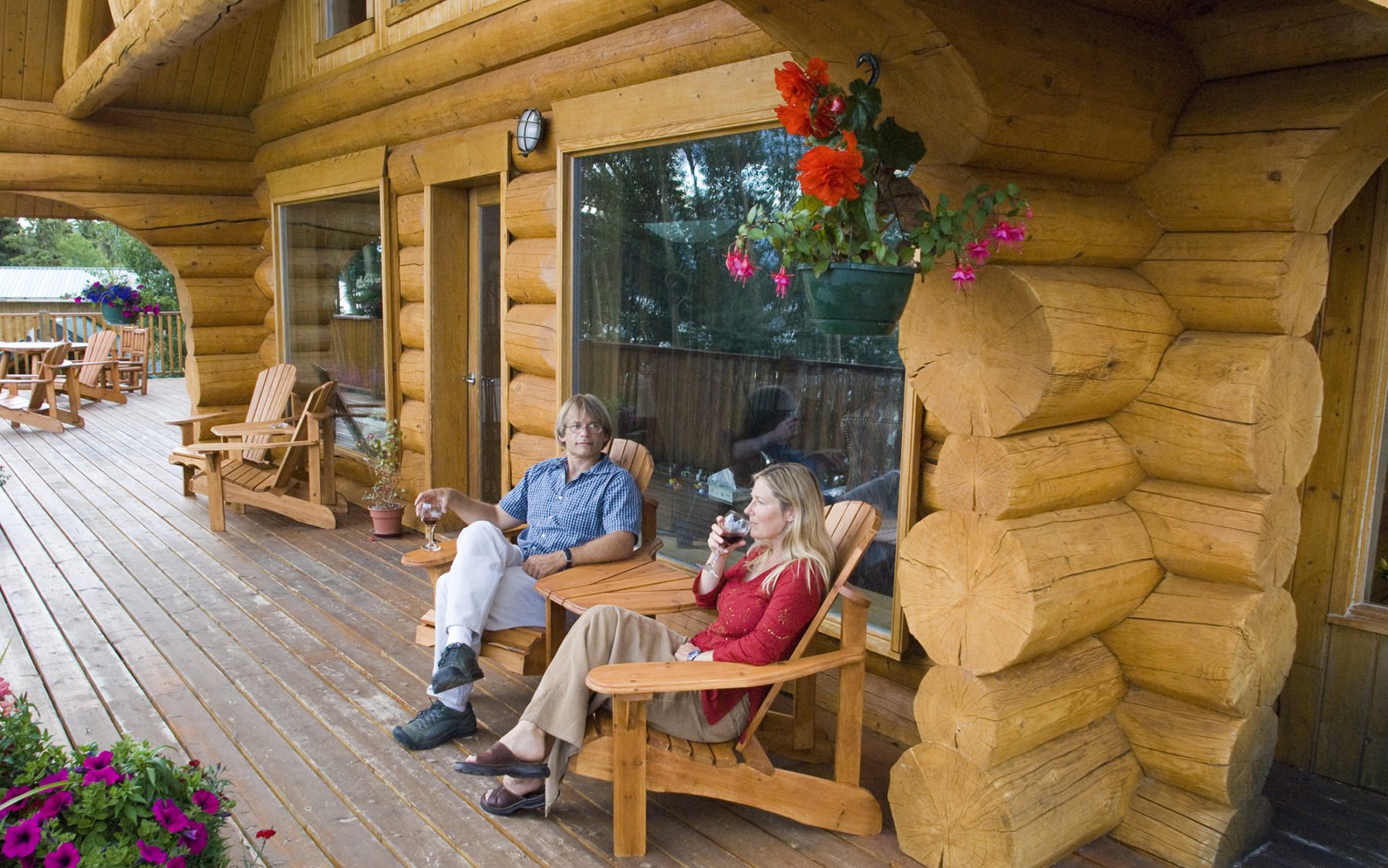The Yukon. Those two words immediately conjure images of a wild, remote land; one that promises so much when it comes to adventure, wildlife, a thriving indigenous culture, unique history, and amazing landscapes. Whether it is viewing the province’s amazing wildlife, paddling the many famous rivers, hiking into a mountain- and glacier-crowded wilderness, learning more about the rich First Nations culture and the gold-rush era, or experiencing the natural phenomenon that is the Northern Lights (Aurora Borealis), the Yukon Territory offers all an adventurous traveller can dream of. And it does that through every season. Yep, even the seasons you’d perceive as a bit chilly – autumn and winter – provide the chance for a multitude of life memories. Here’s how…
To the Far North
The Yukon Territory is one of Canada’s northernmost territories, sitting above the province of British Columbia, and to the west of the Northwest Territories. Its northern border is shared with the USA’s Alaska. And it is vast. At 482,443 square kilometres, the Yukon contains an incredibly diverse mix of landscapes, from mountain ranges (including Canada’s highest peak, Mt Logan, at 5959 metres, located in Kluane National Park Reserve, a World UNESCO site, owing to it containing the world’s largest non-polar ice fields) and glaciers, to huge lakes, immense valleys, and a number of large (and famous) wild waterways (including the territory’s namesake river), as well as the Carcross Desert, often described as the world’s smallest desert.
The territory is 80 per cent wilderness, which has resulted in an abundance of wildlife, including iconic North American species such as grizzly bears, wolves, moose, caribou (the Yukon’s 200,000 porcupine caribou tackle the longest mammal land migration in the world each year), bald eagles and more.
The Yukon’s vast size doesn’t mean it is crowded, though. The sparse population of around 41,800 residents includes 14 First Nations (accounting for 20 per cent of the territory’s population) resulting in a rich and thriving culture. On account of this wilderness to people ratio (the population density is around 0.1 person per square kilometre), there’s a huge amount of space for some amazing adventures and the chance to get up close to one of nature’s most famous spectacles.
The best light show on the planet
“In the fall [Autumn], at the end of August, the beginning of September,” says Tobias Barth, of Epic North Tour Experiences. “When the leaves start turning colours and the Northern Lights show up for the first time after a couple of months of 24 hours of daylight – there is no word to describe the beauty of the Yukon landscape around this time.”
They are powerful words, and apt when describing both the start of Aurora Borealis viewing opportunities, and the coinciding timeline of nature in the Yukon. The Yukon Territory is located below what is known as an “auroral oval” (where the aurora displays most strongly). The ‘bowl’ is a band around the earth that has been ‘pushed’ or moved by strong solar winds toward the dark (night) side of our planet. That solar wind disrupts the earth’s magnetosphere enough that particles from both the wind and the plasma of the magnetosphere ionise after precipitating in the upper atmosphere. The result of that ionisation is that brilliant and always varying emission of different light in the night sky. The colours vary due to always changing levels of oxygen and/or nitrogen in the atmosphere, thus you may have one night of the aurora with a notably greener tinge (higher levels of oxygen), but another with a more pink/purple hue (due to a larger amount of nitrogen in the atmosphere).
The solar cycle also plays a role in the aurora displays. The solar cycle is a periodic 11-year change in the sun’s activity. During the cycle, the levels of solar radiation and ejection of solar material, the number of sunspots, solar flares and coronal loops ebb and flow to a period of maximum activity (known as the ‘solar max’) and back again. Solar cycle 25 began in December of 2019 and is set to culminate between 2023 and the winter of 2025/26, when solar max will create more aurora activity here on Earth. Although this peak period will slowly ebb after 2026, aurora activity will still be dynamic, offering incredible northern lights viewing opportunities throughout the entire cycle.

Tobias notes this is why even Yukon locals never tire of the lights in the sky.
“The Northern Lights are a breathtaking natural phenomenon… Even after hundreds of sleepless and freezing nights, I never get bored of it.”
There are two seasons of aurora viewing, kicking off with the darkening skies of autumn (August-September; Dawson City is a great location for aurora viewing at this time of year), and then the winter season, from October to April. There are plenty of Northern Lights based tours and activities are on offer, with the majority based out of the Yukon capital of Whitehorse, as well as from some of the Yukon’s famous wilderness lodges (more on those later). A lot of operations offer a variety of ways in which to view the Northern Lights (Epic North Tour Experiences is one of the few that also offer custom/bespoke tours).
A tale of two seasons in the Yukon
The aurora is, without doubt, spectacular. Whether you visit the Yukon for the winter viewing season or the autumn, devoting a number of days to enjoying the Northern Lights’ distinctive displays is an absolute must (we’d recommend a minimum of three nights to have the best chance of viewing the lights). The best thing – and this applies to either viewing season – is that you don’t have to while away the daylight hours waiting for the lights; there are myriad activities on offer during the day, ensuring sure you are further enriched by the Yukon, beyond that famous set of lights.
From wildlife viewing and ice-fishing, to sled-dog adventures, fat-bike riding, cultural enrichment, and snow-shoeing – not to mention simply enjoying the warmth of a wilderness lodge’s fireplace – a visit to the Yukon in autumn and winter can (and should!) include more than the aurora.
Roxanne Mason runs Yukon Guided Adventures with her husband David and believes autumn through winter is one of the best times of year to visit the Yukon, and not just because those seasons are prime aurora viewing times.
“Here, in the Whitehorse, Haines Junction area, the light is up around 10 in the morning,” Roxanne says. “And it’s only for three months; in February, everyone’s excited because our days are getting longer. And by March, we have lights until about 10 o’clock at night.” That leaves plenty of time for some of the Yukon’s most famous outdoor pursuits…
Going wild in the winter
This mix of slightly longer nights and shorter days of light make autumn/winter ideal for aurora viewing, thanks to the extended period in which the dancing lights can be viewed. It also opens up the days (after a post-aurora nap) to an array of outdoor activities, including the Yukon icon that is dogsledding. These tours can run directly from some lodges, or you can opt to go with a dog-sled company directly. Tours can range from a half-day experience, through to what we reckon would be simply awesome: an overnight or multi-day adventure. Either way, it is an absolute must-do; being dragged on a sled across a vast white-clad landscape, by a team of strong and surprisingly fast huskies (and other sled-dog breeds) is a fantastic way of exploring the more remote parts of this spectacular province – and sit back in your own wilderness camp to view the Northern Lights. Yep, it’s an absolute blast.

Equally unsurprising is the popularity of ice-fishing (think: grayling, lake cod, trout, etc.), which is as simple as drilling a hole in a frozen lake, and then waiting for (hopefully) a bite. Sitting in a chair, surrounded by a snow-clad landscape, while sharing hot drinks and a few laughs with your guide is not a bad way to spend a few hours.
More recently, fat-biking has become a very popular winter activity. These bikes are equipped with large, wide tyres (hence the ‘fat’ moniker) designed to ‘float’ above the snow and ice, while offering excellent traction, and are a brilliant way to explore the Yukon wilderness in winter. You can hire fat-bikes in Whitehorse or jump on a guided tour; some even offer a hot tub soak after a ride – winning! Carcross, and nearby Bennett Lake (around 72k south of Whitehorse) provide a great short ride experience, while there are a number of longer rides in and around Whitehorse, as well as a lovely cruisy pedal along the Millennium Trail beside the famous Yukon River. And, if you’re not super-keen on all that pedalling, some places offer electric fat-bikes; Roxanne laughs about how much fun this activity is for her and her guests at Mount Logan EcoLodge. If you don’t wish to pedal, there’s also snowshoeing, with snowshoe hire and guided tours available.

A standout of the Yukon Territory – and this is regardless of the season – is its abundant wildlife – even in the winter months. Roxanne cites spotting the elusive and shy lynx as a winter wildlife highlight, along with the chance to see wolves, coyote, and a number of bird species. This doesn’t have to mean camping out in the snow to view these species (and others), either. The Yukon Wildlife Preserve, around 30 minutes’ drive from Whitehorse, includes a dozen species and offers a brilliant opportunity to both view and learn more about some of the Yukon’s native fauna. It is open all year round.
A welcome like no other
The Yukon Territory is renowned for many things (think: wildlife, wilderness, indigenous culture, gold-rush history, adventure), and this includes the Yukon people’s welcoming nature and hospitality, from campgrounds and hotels to its famous wilderness lodges. For visitors keen on having a ‘Yukon basecamp’ where you can enjoy day-time activities, friendly and knowledgeable hosts, meals cooked utilising native produce, plus prime Northern Lights viewing – all from the one pristine location – a lodge stay is perfect.
Speaking of pristine locations, it’s hard to argue that Mount Logan EcoLodge delivers on this account. Nestled just outside the boundary of Kluane National Park Reserve, this lodge is a true one-stop shop for winter/summer stays, with a number of on-site guided adventures (hiking, aurora viewing, ice fishing, and more) available, plus a range of accommodation types, from luxury suites to a prospector tent (replicating the accommodation used by miners during the Klondike Gold Rush), and even an old school bus!
The Inn On the Lake is another example, providing similar packages covering autumn and winter aurora viewing, dog-sledding and plenty more, again from a spectacular location. For those looking for a true off-the-grid Yukon lodge stay, the Sky High Wilderness Ranch, at Fish Lake (30 minutes’ drive south of Whitehorse) is your dream come true. With no internet or electricity, and limited phone reception, you can immerse yourself in short or long sled-dog trips in the winter (from a three-day to epic 10- and 14-day sled-dog expeditions), as well as the obvious aurora viewing. The ranch has wood fires keeping your cabin warm and lighting provided by lamps using a natural flame (propane), allowing you to get rid of any modern distractions and enjoy the ancient and beautiful natural world in which you are staying. It is simply brilliant.

These two lodges barely touch the surface in terms of the many wilderness lodges dotted throughout the Yukon and what they offer; another example of the many is the Northern Lights Resort & Spa, which includes the ubiquitous dog-sledding experiences, plus snowmobiling, snowshoeing and ice fishing in the winter. You can also stay in a glass-fronted chalet at the Northern Lights Resort & Spa. These chalets are purposely built for optimum aurora viewing, with large floor-to-ceiling glass. This unique wilderness lodge is framed by pine forests and snow-drenched mountains, with cabins created from Douglas fir trees, and unobstructed views of the aurora borealis.
Finally, there is Southern Lakes Resort. Perched on Tagish Lake, this resort is situated within the traditional territory of the Carcross / Tagish First Nation. During autumn and winter, guests enjoy northern lights viewing, snowshoeing and snowmobiling. As you will see, once you start researching Yukon lodge-stays further, the choices are excellent – and endless!
Your Yukon adventure: All you need to know
Getting there: This may surprise some, but even though the Yukon Territory seems like it is at the ‘ends of the earth’ it is not – and getting there entails a straightforward journey. Flights connecting Australia’s eastern seaboard (the majority from Sydney) to, firstly, Vancouver, and then directly on to Whitehorse mean you will be absorbing the spectacle that is the Yukon Territory in no time at all.
Aurora seasons: Late autumn and winter offer prime aurora viewing; from late August through to the end of September covers off autumn and a slightly wider choice of outdoor activities, plus you have the spectacle of gold and crimson as tree leaves change colour to signal the move toward winter. Average temperatures in autumn range from highs of 4 and 19 degrees Celsius, to overnight temps of between -3 and 7 degrees.
Winter (November to March) is cold with longer nights, although not as frigid as us Aussies may presume. Temperatures range from -1 and -11 degrees during the day, and -12 and -20 overnight. Pleas note that Whitehorse and the southern parts of the Yukon can experience far colder temperatures, dipping to -40 degrees and often to -30 degrees around mid-December to early March.
Accommodation: As well as the excellent wilderness lodges throughout the territory, the Yukon has options ranging from camping and RV parks and B&Bs, to hostels, hotels, motels, and rentals.
More information: Travel Yukon is a brilliant source of information for all things Yukon, whether that is suggested visitor itineraries, details on the various parts of the territory, ideas for how to plan for a visit, informative blogs and loads more, you will find it here.
